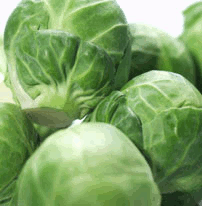Are fresh berries better than frozen?
A March 2003 European Journal of Clinical Nutrition study comparing two groups of healthy older men (aged 60) found that those eating berries daily had 32-51% higher blood levels of quercetin, a powerful flavonoid with a wide range of beneficial actions. In other recent studies, quercetin has demonstrated antioxidant and anti-carcinogenic activities, plus several population studies suggest it also offers significant protection against cardiovascular disease.
Practical Tips
Now, as the United States enters the season of the year when fresh berries are readily available, here’s the really good news: the berries used in this study were frozen, and therefore contained between 18-25% less quercetin than fresh berries!
Until recently, it has been assumed that frozen berries retain all the nutrients found in fresh berries. While they do retain all virtually all of their vitamins and minerals, significant losses occur in other beneficial compounds, such as quercetin, when berries are either frozen or heated.
The researchers chose to use frozen berries since in Finland, the harvesting season for black currants, lingonberries and bilberries is only a few weeks in the autumn, so for the majority of the year, only frozen berries are available. But, they did instruct study participants to gently defrost the berries and not to heat them.
In the U.S., it is our good fortune that fresh berries, grown both here and abroad, are widely available from early summer through late fall, and though more expensive at other times, can be purchased throughout the year.
For in-depth information including other health benefits, selection, storing and serving tips for berries, truly some of the World’s Healthiest Foods, simply click on any of the following: blueberries, raspberries, or strawberries.
For some exceptionally quick, easy and delicious recipes featuring berries, click on the Recipe Assistant, select whichever berry you choose from the Healthy Foods List, and click on the Submit button. A list containing links to all the World's Healthiest Foods' recipes containing the berry chosen will appear immediately below.
Here are links to two of George’s favorite recipes featuring fresh berries:
Quercetin is abundant not only in berries, but also in onions, tea, apples and red wine, and previous studies have shown that quercetin is also well absorbed from these foods (see our Healthy Food News stories An Apple and an Onion a Day Keeps Chronic Diseases Away and DrinkTea to Your Heart’s Content).
Research Review
In Nordic countries, such as Finland, where berries are commonly consumed, berries are a more important source of quercetin than onions, tea, apples or red wine. In Finland, the berries contributing most significantly to the total intake of quercetin are lingonberries, which are closely related to cranberries; bilberries, which are closely related to blueberries; and black currants.
Finnish investigators at the National Public Health Institute, Helsinki, Finland studied blood levels of quercetin, a powerful antioxidant flavonoid in 40 healthy older men (aged 60). The men were divided into two groups and for the following 8 weeks, one group ate a typical Finnish diet while the other group, in addition to their normal diet, were given 100 grams each day of frozen berries: black currants, lingonberries, and bilberries. Fasting blood samples were obtained 2 weeks prior to the study, on the day the study began, and at 2, 4 and 8 weeks. The men’s dietary intake of quercetin was assessed from food records they kept that were collected when the study started and again, after 8 weeks.
Blood levels of quercetin were much higher in the men who ate berries each day compared to the control group. In the men eating berries, blood levels of quercitin ranged from 21.4 to 25.3 micrograms—a very significant 32-51% higher than quercetin levels in men in the control group. Not surprising since, when the study began all the men were receiving a similar amount of quercetin from their diets, but in the men who began eating berries, daily quercitin intake was more than twice that of controls—between 11.9 and 13.7 mg per day in the berry group compared to between 5.2 and 6.4 mg per day in the controls. In the berry group, the men were receiving an average of 6.2 mg of quercetin each day just from the berries!
These results show that not only are berries a good source of well absorbed quercetin, but daily consumption, even of frozen berries, can significantly boost the body’s levels of this powerful protective flavonoid.
References:
Erlund I,, Marniemi J, Hakala P, Alfthan G, Meririnne E,,, and Aro A. Consumption of black currants, lingonberries and bilberries increases serum quercetin concentrations. Eur J Clin Nutr (2003) 57, 37-42.
Häkkinen SH, Kärenlampi SO, Heinonen IM, Mykkänen HM, Törrönen AR. (1999). Content of the flavonols quercetin, myricetin, and kaempferol in 25 edible berries. J Agric Food Chem, 47: 2274-2279.
Mikkonen TP, Määttä KR, Hukkanen AT, Kokko HI, Törrönen AR, Kärenlampi SO, Karjalainen RO. (2001). Flavonol content varies among black currant cultivars. J Agric Food Chem, 49: 3274-3277.
Send us your favorite recipes using the World's Healthiest Foods, so we can share them with others!
|





